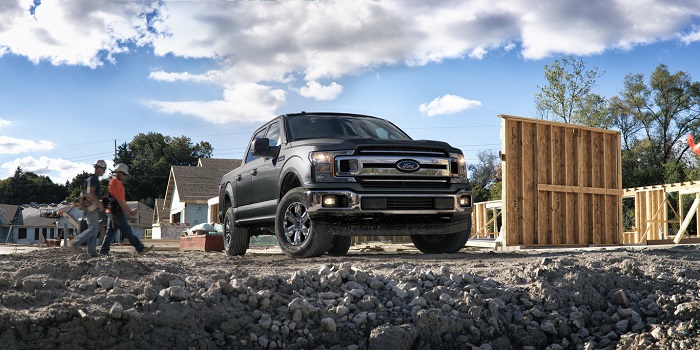Ford F-150: Two new reasons why RHD might happen in next generation
Two key factors might make the return of a right-hand drive (RHD) Ford F-Series pickup economically feasible for the first time in years – opening the door for a hypothetical return to Australia.
Khodrocar - The more obvious of these is the recent addition of a diesel engine to what has long been the US market’s number one vehicle (more than 800,000 annual sales there). The second is the success Ford has enjoyed by ‘globalising’ the iconic Mustang model, setting a potential precedent.

Sales buffs will know that the locally engineered Ford Ranger is the company’s biggest seller by miles in our market, and indeed is the overall second biggest-selling vehicle in the whole country. Number two in Ford’s Australian ranks? Mustang.
Furthermore, with utes now making up 17.5 per cent of the Australian new vehicle market, more brands are looking at options for us. RAM allows ASV to convert the 2500 locally to factory standards, while Nissan is strongly considering making the Titan RHD.
To the meat of the story. Peter Fleet is the British group vice-president of Ford Asia Pacific, overseeing the key market of China but also little old Australia. We had the chance to speak with him at this week’s Detroit Auto Show.
"Yes, to answer you directly. The availability of diesel in F-150 would make a discussion about a vehicle that could be sold in RHD a less difficult conversation,” he said.
Of course, lest we take him out of context, he added: "But it’s still a very challenging conversation. But there are lots of markets that’d love to have F-150”.
Perhaps more interesting, though, was Fleet’s hint that the big success of making the Mustang for the whole world, in this current generation, might open the company up to expanding this program of ‘internationalising’. The Pony Car has been a smash in Australia, China, the UK, Germany, and more.
"In the company, when you look at the success we had from Mustang. What did we do there? We took one of our iconic North American brands and globalised it. There is a lesson there. Those kind of things work,” he postulated.
"I am a big advocate of trying to make more of those iconic ‘brands’. If I have any opportunity to bring those to Australia I’d be at front of queue.”
The good news is that Fleet’s direct manager is James Farley, who in-turn reports directly to the Ford global president and CEO Jim Hackett. So you’d imagine he carries a little weight internally.
For background, what precisely is holding Ford back from offering the F-Series – not offered in F-250 guise to us since 2006, and in F-150 guise since 1993 – in factory-backed RHD, forcing big truck fans to source locally converted, expensive offerings from companies like Performax?
It’s not homologation, really. It’s just production scale. Any RHD sales would be a drop in the ocean compared to what Ford manages in North America with a simpler, LHD-only operation.
"It’s all about scale,” Fleet confirmed. "That’s the tricky bit, it’s only that. Can you get enough scale to warrant the development of RHD, and which plant do you put put it in?”
Now, at the risk of planting false ideas with this story, Fleet was asked if any speculation that the F-Series was already green-lit for RHD might be drawing a proverbial long bow.
"I think so… a little ahead of the curve I think,” he said, adding that "it’s even more difficult to do it mid-cycle”. The current Ford F-150 premiered in 2015, so the next one isn’t due until the early 2020s – though development begins way earlier.
Nevertheless, it’s a fair assumption that a RHD Ford F-150 in next-generation form, made as part of a global program, seems a stronger chance than it has been in a long time. Fingers crossed?
Source: Car Advice
Latest News


